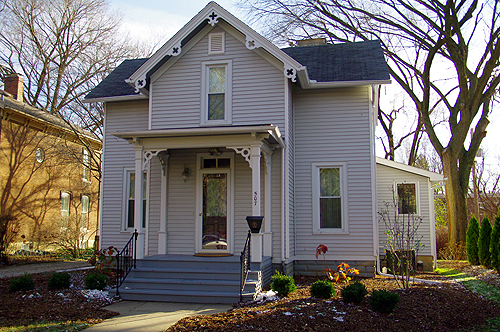Gothic Revival
 |  |
The Gothic Revival movement in America sought to revive the spirit and forms of Gothic architecture. The style was used for country cottages, churches, and public buildings. The Gothic Revival style was created in reaction, and in opposition, to the formal classical ideas in art and architecture that had been dominant for the previous two hundred years. Gothic Revival in America was stimulated by pattern books published by Alexander Jackson Davis and Andrew Jackson Downing. The Gothic Revival originally began in England in 1749 when Sir Horace Walpole began remodeling his country house. Shortly thereafter, others began copying Walpole, and picturesque country houses became common in England. Alexander Jackson Davis, well known for first writing pattern books on American Houses, was the first American architect to design Gothic domestic buildings, beginning in 1832. Andrew Jackson Downing expanded on Davis's ideas and published more house plan books which included Gothic Revival plans.
| |
The style was widely used in rural areas, and was uncommon in urban areas mostly because Davis and Downing stressed the beauty of rural country houses in their books. The style was popular in America from 1830 to 1880, and can be divided into Early Gothic Revival, Late Gothic Revival, and High Victorian Gothic Revival. Carpenter Gothic and Collegiate Gothic also became common variations of the Gothic Revival style. Some common features of Gothic Revival buildings include steeply-pitched roofs, the wall surface continuing into the gable, a one-story entry or full-width porch with flattened, pointed arches (called "Gothic arches"), gables with decorated verge boards under the eaves, windows extending into gables, and cross- or intersecting-gable roofs. | |
